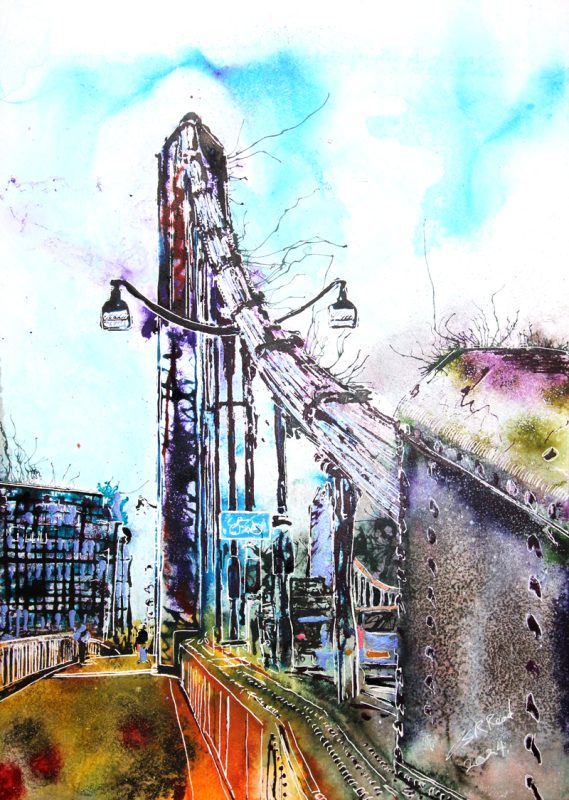Lost in Scale
Disappearing figures on Chelsea Bridge
Looking across bridges gives a sense of scale that’s lost when seen from the river or the road below. They can look deceptively dainty when viewed along their length.
In the distance, are a few tiny figures dwarfed by the central column. Even the cars and busses on the roadway seemed tiny in comparison.
Chelsea Bridge dominates the painting, or rather, its pillar dominates. You can’t see the other three main pillars which support these giant cables. Let alone the people. Without people, there would be no architecture. Yet with a structure this size, it’s hard to notice the very people for which it was created.
The Tower is almost a silhouette. The rivets are on display in neat rows, each one of 1000s that has been painted with numerous layers, so that details are lost, their shape just perceptible. On this sunny day, they cast crisp shadows on the metal face. Towers disappearing in shade, while the details of support cables are picked out in sunlight reflections. Almost as dominant is an abstract, block shape, serving to anchor the cables. Textured ink lends it an aged appearance, with blooms of colour appearing and breaking into granules.
Tendrils of blown ink along with the gritty appearance, give the image a weathered, neglected look. Hinting at abandonment, or maybe they sparks of life crackling through the bridge itself? A conduit between the North And South banks. Essential to the life of the city, enabling the traffic free movement. Ironically, the very movement captured in frozen time forever. Like the figures on the bridge, their movement suspended for an instant in reality but eternally captured in this painting. The tiny moment, a mere blip in the long life of a London Bridge.

According to Wikipaedia: This is the second Chelsea Bridge which opened in 1937. It was the first self-anchored suspension bridge in Britain, and was built entirely with materials sourced from within the British Empire. Chelsea Bridge was designed by LCC architects G. Topham Forrest and E. P. Wheeler and built by Holloway Brothers (London).
